Your software solution for Door Inspections and Resident Engagement
New Legislation
Fire door checks and the resident engagement challenge
The three new, key pieces of legislation
Fire Safety (England) Regulations 2022
New legislation will make housing providers far more accountable to their residents.
The quality of information held about fire safety in buildings, including communal fire doors and flat entrance doors will need to become much better defined and more accurate.
Doors are the tip of the iceberg; data collection and inspections will have to extend to every element of your buildings, including lifts and fire safety equipment.
The challenge of compliance on this scale can only be met with the best data-based systems and processes.
Door Surveys
The RiskBase app produces industry leading Communal Fire and Flat Entrance Door Inspections.
We provide ready-made door survey templates including all data points and condition checks to get you started. They’re completely customisable, so you can create the perfect audit.
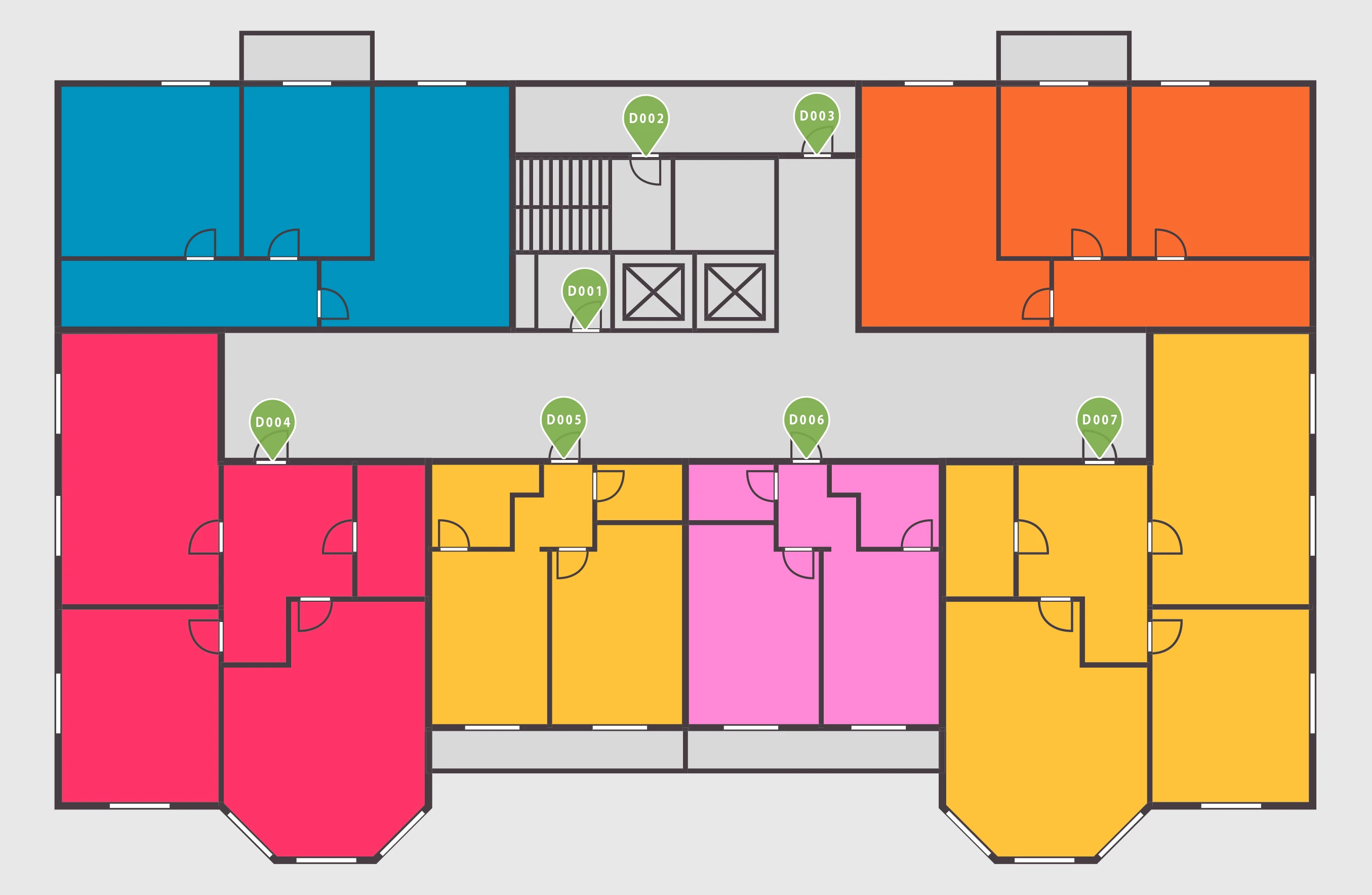
Store Specification information such as; fire resistance, certification, leaf configuration, finish, closer type and door gap measurements.
Check Condition of the leaf, frame, seals, glazing and hinges. Ensure the door closer performs adequately, the leaf sits securely against its stop and all appropriate signage is displayed.
Identify defects and a list of pre-written remedial actions will be suggested to you.
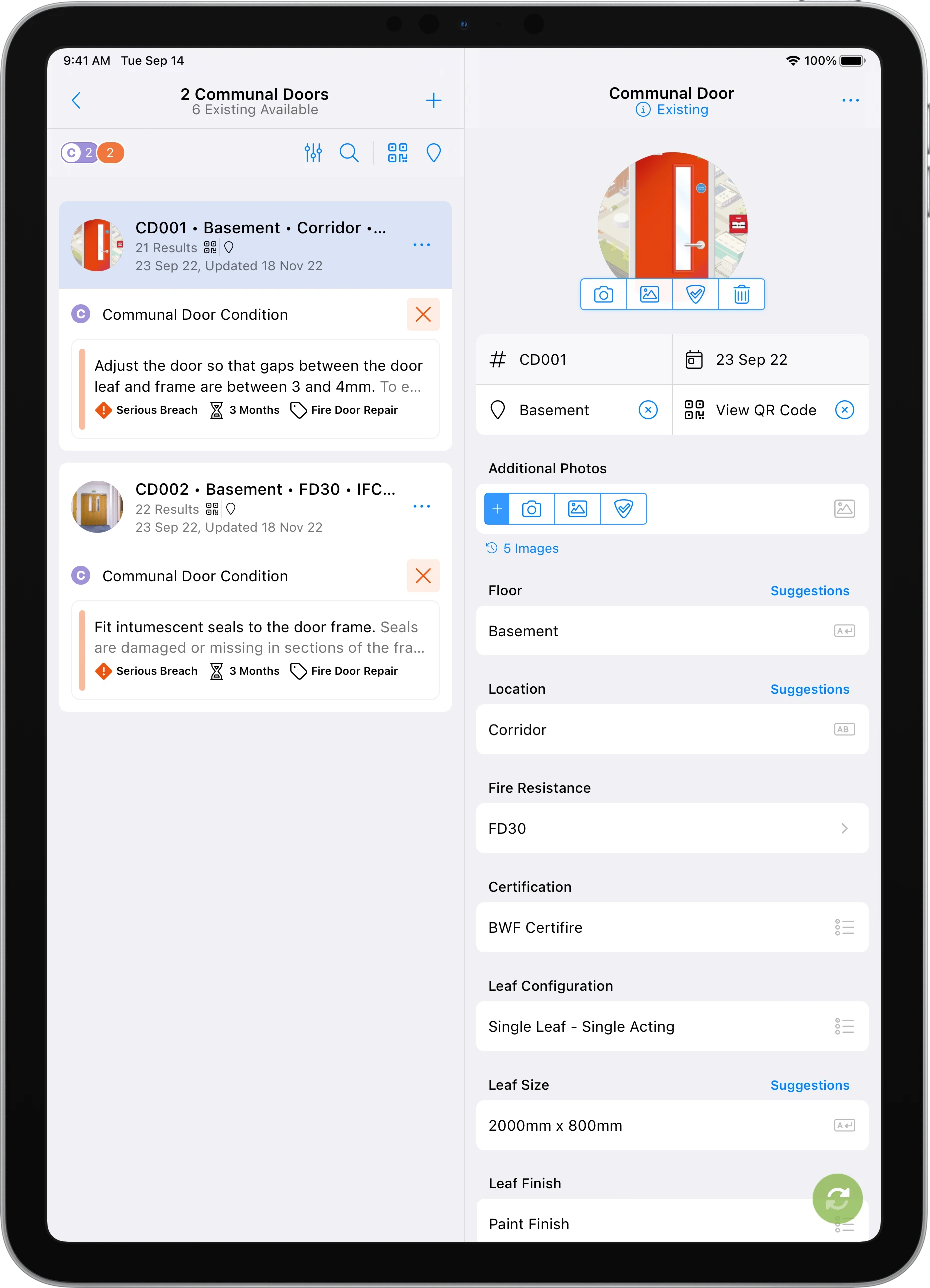
Tag your doors with QR Codes
QR code labels help both assessors and residents because they link to the door records stored in RiskBase.
When reviewing a door, assessors scan the QR code which recalls the door’s history. All that’s needed is a quick review of the specification information followed by a condition check to recommend any remedial work.
Residents scan the same QR code to access the Resident Engagement portal. The portal shows them information about the door and wider building. Residents can report faults and even perform self-assessments of their Flat Entrance Doors if required.
Each organisation is able to choose and customise the data available on their resident engagement portal, along with any self-reporting and fault-reporting functions.
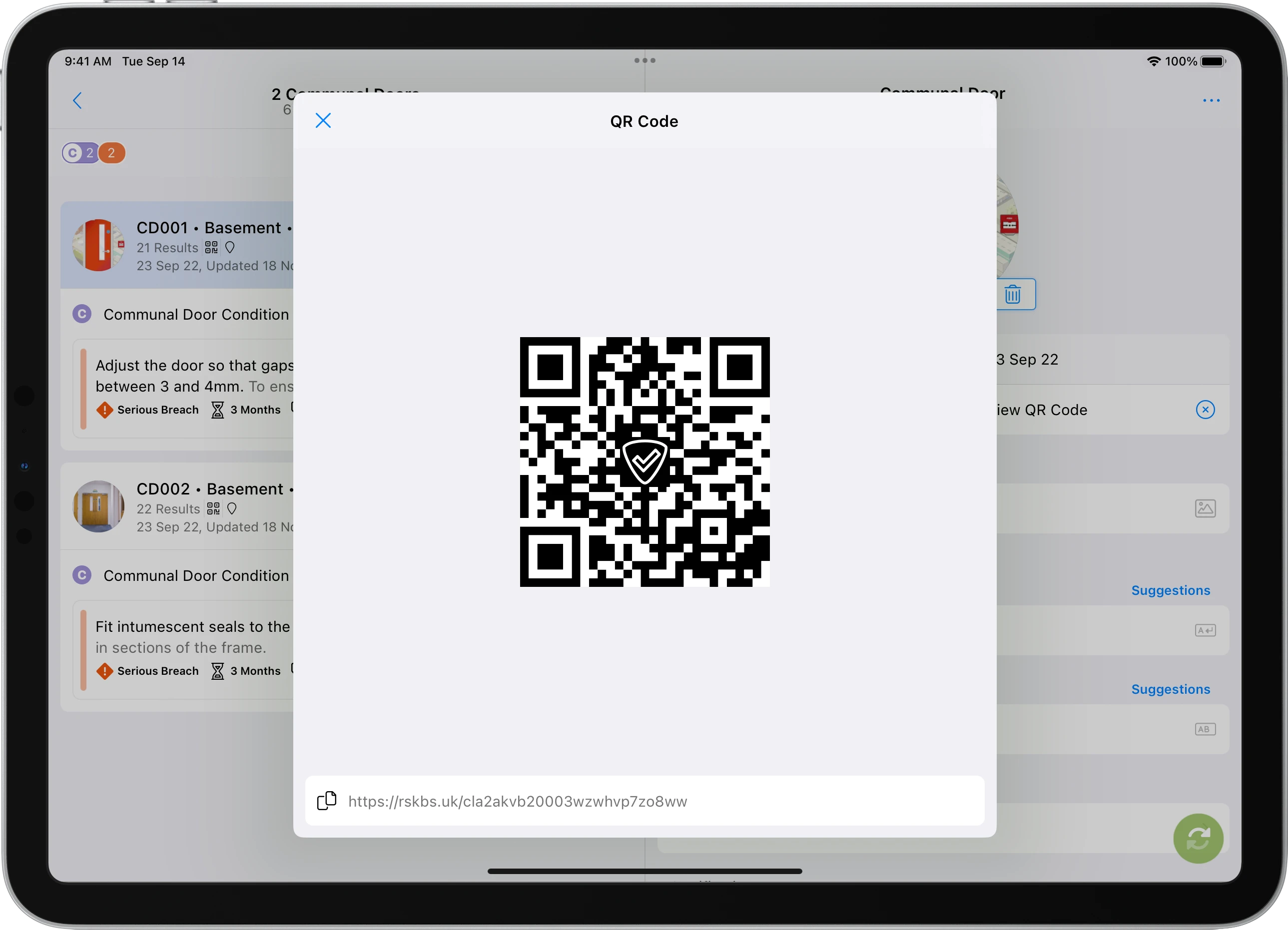
Managing Access of Flat Entrances
Legislation requires in blocks over 11m; the responsible person must undertake on a best endeavour basis, annual checks of all flat entrance doors (including self-closing devices) that lead onto a building’s common parts.
Evidence that reasonable steps have been taken to inspect the door and its closer must be kept. The first step is to record each attempt. We can do that with a simple question during the inspection such as:
Inspection Type?
Responses are custom to each organisation and specific workflows can be triggered depending on the outcome. A sorry we missed you card may be left, explaining the importance of the checks; inviting them to schedule a reinspection, or inviting them to use their own smartphone to carry out a check on the door, providing video evidence of operation.
Crucially, the flat door will be updated with a status to say access was attempted and only the resident of that flat and the assessing organisation will be able to see it.
If a full inspection is not possible assessors can add an action to schedule a follow-up inspection.
On return visits, doors can be filtered by the last full access inspection, making prioritisation simple.
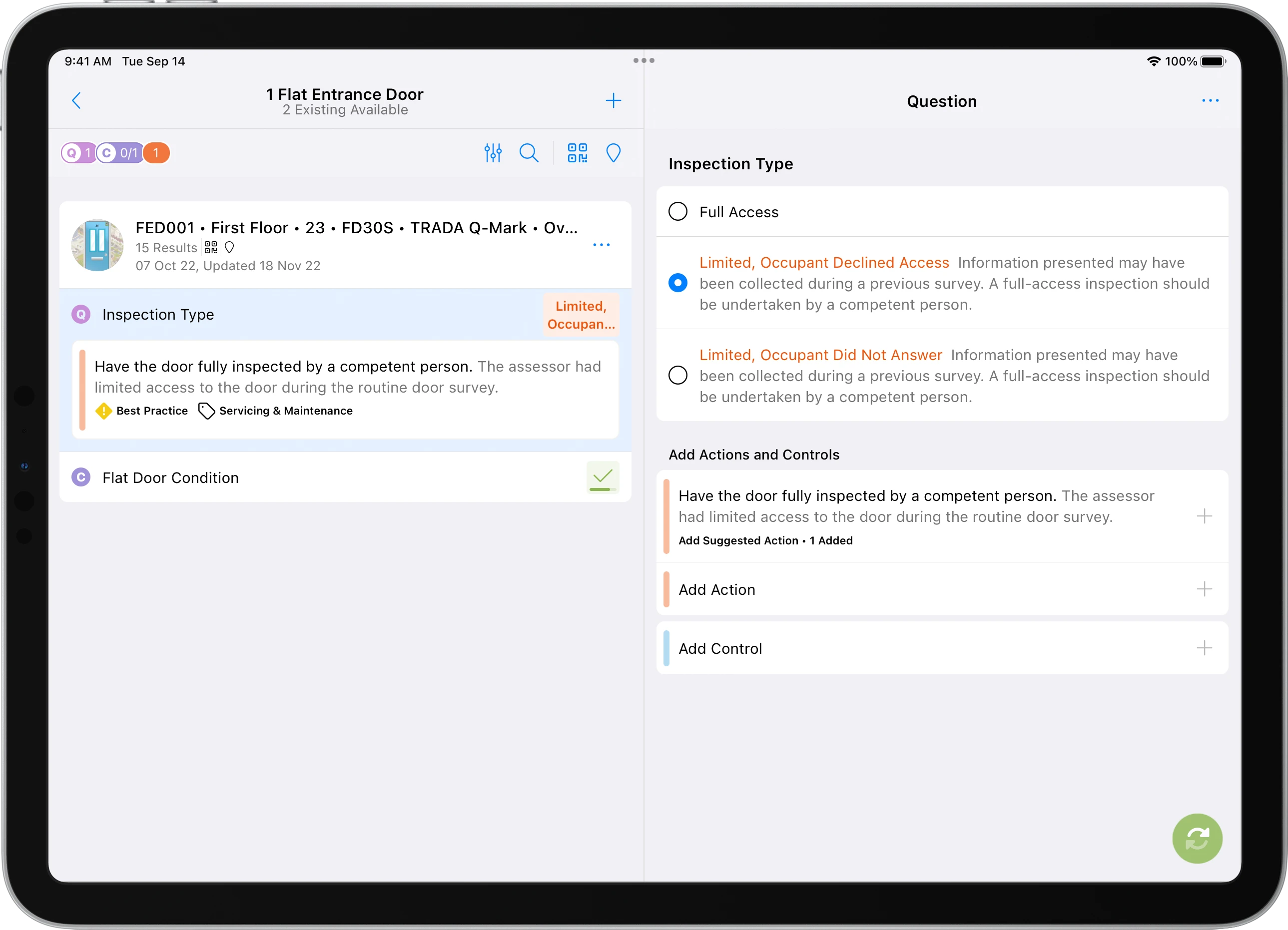
Reporting
Once a door survey is completed, a detailed yet concise report is generated; available both in the resident engagement portal and as a PDF. Its well-structured findings, graphics and photos make the document simple and easy to understand.
Organisations using the resident engagement portal will be able to report on engagement with residents: How many visits, how often, how many faults reported, how many self-assessments of flat entrance doors.
Programme scheduling and Managing Remedial Work
Automatically assign inspections based on the type, size and location to users within a team based on pre-set criteria. Split workload between internal assessors and external contractors where it’s required. Re-assess and perform quality control audits.
Remedial actions identified from inspections can go through a quality control process and based on the number of outstanding actions either go for tender or for individual repair. Based on the type of work specified, automatically allocate work to contractors or DLOs.
Integration with other tools and Software
RiskBase is focussed on maintaining data integrity, whatever the integration requirements, we can pull and push data, using APIs or file exchange.
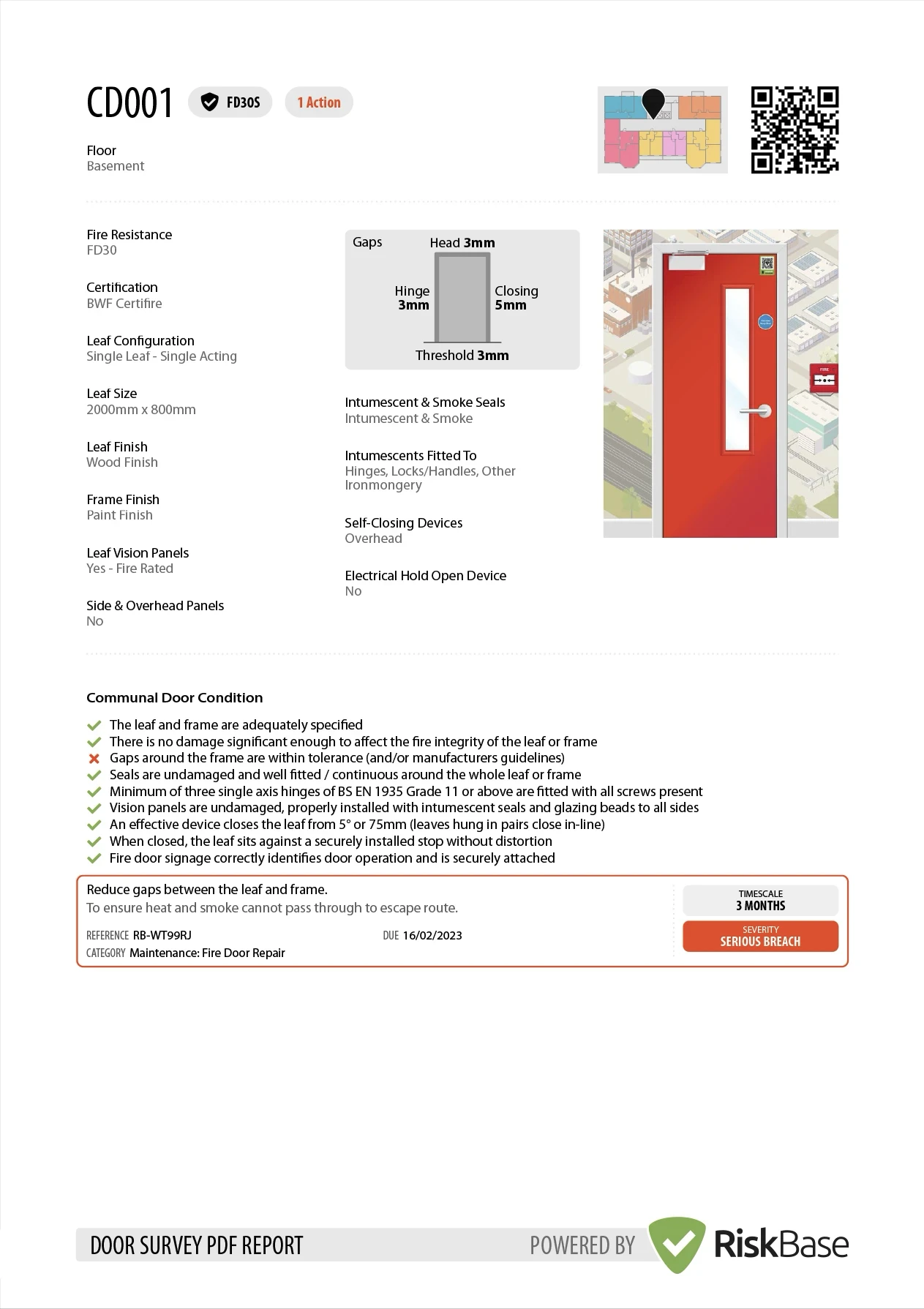
Resident Engagement
Browse our demonstration Resident Engagement Portal.
The RiskBase resident engagement portal is designed to address not just the letter of the legislation but the spirit of its origins in the Hackitt Review and Grenfell Enquiry.
Designed as a true engagement portal, rather than paying lip-service, it educates and involves residents so that they can see the work being done on their behalf to keep them safe and so they understand what they need to do to help themselves.
The information contained within is simplified to cater for a non-technical audience, yet it’s not missing the detail. It’s designed to showcase a successful engagement strategy.
The portal is available as a customisable, off-the-shelf product as well as a range of APIs to integrate with other products and portals.